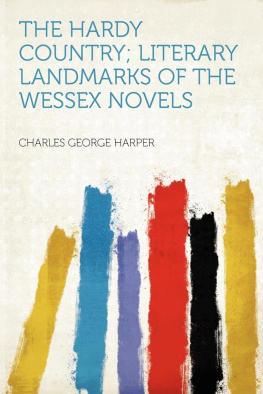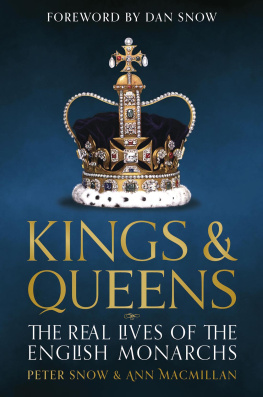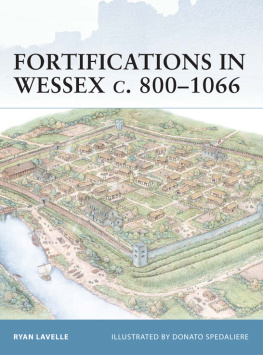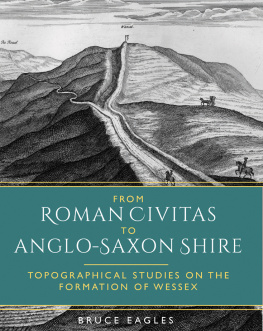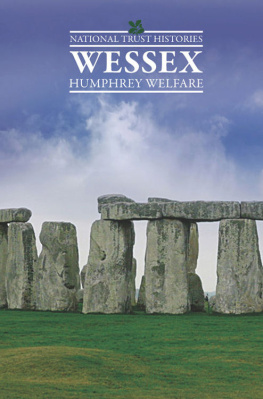Wessex from AD 1000
A Regional History of England
General Editors: Barry Cunliffe and David Hey
For full details of the series, see .
Wessex
from AD 1000
J. H. Bettey
First published 1986 by
Longman Group Limited
Published 2014 by Routledge
2 Park Square, Milton Park, Abingdon, Oxon OX14 4RN
711 Third Avenue, New York, NY, 10017, USA
Routledge is an imprint of the Taylor & Francis Group, an informa business
Longman Group Limited 1986
All rights reserved; no part of this publication may be reproduced, stored in a retrieval system, or transmitted in any form or by any means, electronic, mechanical, photocopying, recording, or otherwise, without the prior written permission of the Publishers.
British Library Cataloguing in Publication Data
Bettey, J. H.
Wessex from AD 1000.(Regional history of England)
1. Wessex (England)History
I. Title II. Series
942.3 DA670.W4
Library of Congress Cataloging in Publication Data
Bettey, J. H.
Wessex from AD 1000.
(Regional history of England)
Bibliography: p.
Includes index.
1. WessexHistory. I. Title. II. Series.
DA670.W48B475 1986 942.2735 855924
ISBN 13: 978-0-582-49208-0 (pbk)
Contents
England cannot be divided satisfactorily into recognisable regions based on former kingdoms or principalities in the manner of France, Germany or Italy. Few of the Anglo-Saxon tribal divisions had much meaning in later times and from the eleventh century onwards England was a united country. English regional identities are imprecise and no firm boundaries can be drawn. In planning this series we have recognised that any attempt to define a region must be somewhat arbitrary, particularly in the Midlands, and that boundaries must be flexible. Even the South-West, which is surrounded on three sides by the sea, has no agreed border on the remaining side and in many ways, historically and culturally, the River Tamar divides the area into two. Likewise, the Pennines present a formidable barrier between the eastern and western counties on the Northern Borders; contrasts as much as similarities need to be emphasised here.
The concept of a region does not imply that the inhabitants had a similar experience of life, nor that they were all inward-looking. A Hull merchant might have more in common with his Dutch trading partner than with his fellow Yorkshireman who farmed a Pennine smallholding: a Roman soldier stationed for years on Hadrians Wall probably had very different ethnic origins from a native farmer living on the Durham boulder clay. To differing degrees, everyone moved in an international climate of belief and opinion with common working practices and standards of living.
Yet regional differences were nonetheless real; even today a Yorkshireman may be readily distinguished from someone from the South East. Life in Lancashire and Cheshire has always been different from life in the Thames Valley. Even the East Midlands has a character that is subtly different from that of the West Midlands. People still feel that they belong to a particular region within England as a whole.
In writing these histories we have become aware how much regional identities may vary over time; moreover how a farming region, say, may not coincide with a region defined by its building styles or its dialect. We have dwelt upon the diversity that can be found within a region as well as upon common characteristics in order to illustrate the local peculiarities of provincial life. Yet, despite all these problems of definition, we feel that the time is ripe to attempt an ambitious scheme outlining the history of Englands regions in 21 volumes. London has not been included except for demonstrating the many ways in which it has influenced the provinces for its history has been very different from that of the towns and rural parishes that are our principal concern.
In recent years an enormous amount of local research both historical and archaeological has deepened our understanding of the former concerns of ordinary men and women and has altered our perception of everyday life in the past in many significant ways, yet the results of this work are not widely known even within the regions themselves.
This series offers a synthesis of this new work from authors who have themselves been actively involved in local research and who are present or former residents of the regions they describe.
Each region will be covered in two linked but independent volumes, the first covering the period up to AD 1000 and necessarily relying heavily on archaeological data, and the second bringing the story up to the present day. Only by taking a wide time-span and by studying continuity and change over many centuries do distinctive regional characteristics become clear.
This series portrays life as it was experienced by the great majority of the people of South Britain or England as it was to become. The 21 volumes will it is hoped substantially enrich our understanding of English history.
Barry Cunliffe
David Hey
General Editors: Barry Cunliffe (to AD 1000) and David Hey (from AD 1000)
The regionalisation used in this series is illustrated on the map opposite.
*The Northern Counties to AD 1000 Nick Higham
The Northern Counties from AD 1000 Norman McCord & Richard Thompson
The Lancashire/Cheshire Region to AD 1000 G.D.B. Jones with Denise Kenyon & Nick Higham
The Lancashire/Cheshire Region from AD 1500 John Smith
Yorkshire to AD 1000 T. G. Manby
Yorkshire from AD 1000 David Hey
The Severn Valley and West Midlands to AD 1000 R. T. Rowley
The West Midlands from AD 1000 Marie B. Rowlands
The Welsh Borders from AD 1000 R. T. Rowley
The East Midlands to AD 1000 Jeffrey May
The East Midlands from AD 1000 J. V. Beckett
The South Midlands and Upper Thames to AD 1000 David Miles
The South Midlands and Upper Thames from AD 1000 John Broad
The Eastern Counties to AD 1000 W. J. Rodwell
The Eastern Counties from AD 1000 B. A. Holderness
The South West to AD 1000 Malcolm Todd
The South West from AD 1000 Bruce Coleman & R. A. Higham
Wessex to AD 1000 Barry Cunliffe
*Wessex from AD 1000 J. H. Bettey
The South East to AD 1000 Peter Drewett
The South East from AD 1000 Peter Brandon & Brian Short
*already published
1. The Northern Counties
2. The Lancashire/Cheshire Region
3. Yorkshire
4. The Severn Valley and West Midlands
5. The East Midlands
6. The South Midlands and the Upper Thames
7. The Eastern Counties
8. The South West
9. Wessex
10. The South East
Acknowledgements
Any general survey of this sort must depend heavily upon the detailed research of others on specific subjects and localities, and a list of the major studies and articles which have been consulted will be found in the references and the bibliography. The General Editor, Dr David Hey, has been a constant source of encouragement and guidance, and I am grateful to him for all his perceptive comments upon earlier drafts of each chapter. I also acknowledge with thanks the help and advice of numerous friends and colleagues, in particular Michael Aston, Dr Robert Dunning and Bernard Lane each read and commented upon various sections of the book. I am also grateful to Michael Aston for all his work on the maps, in particular for drawing .





